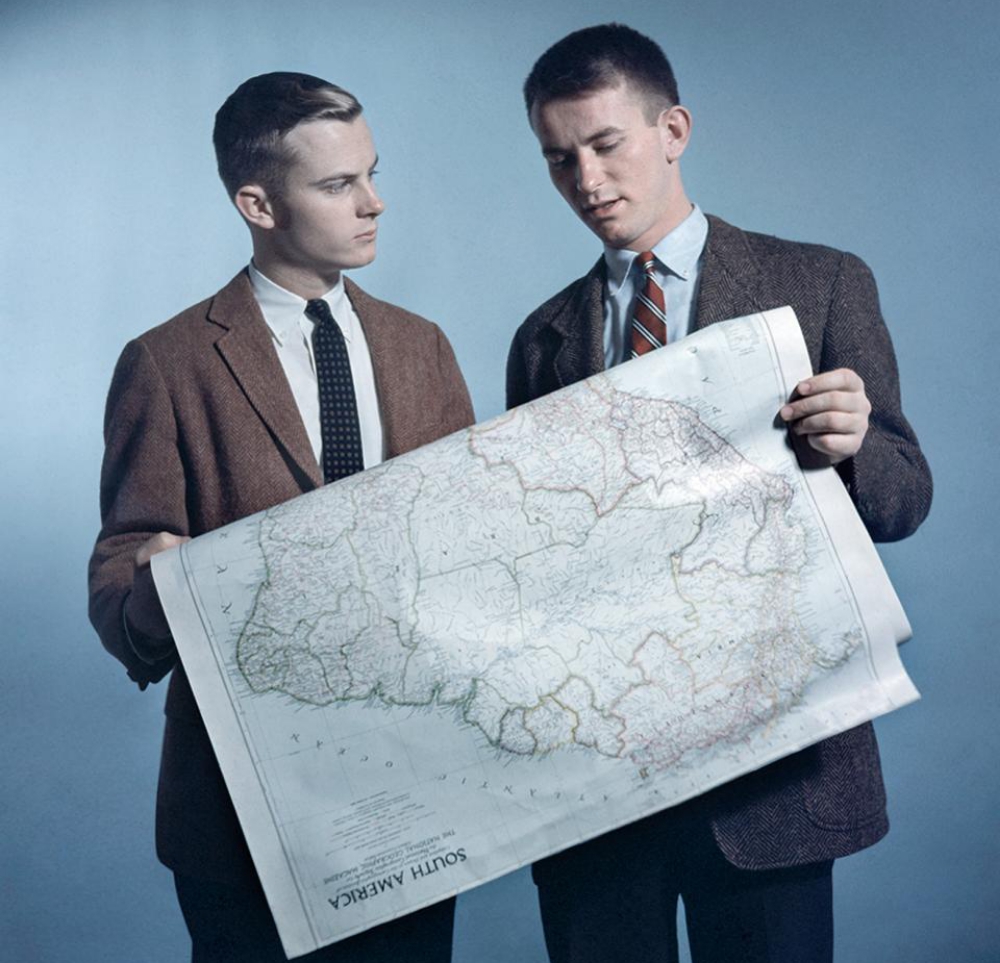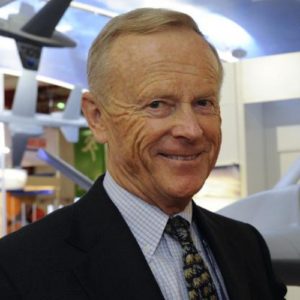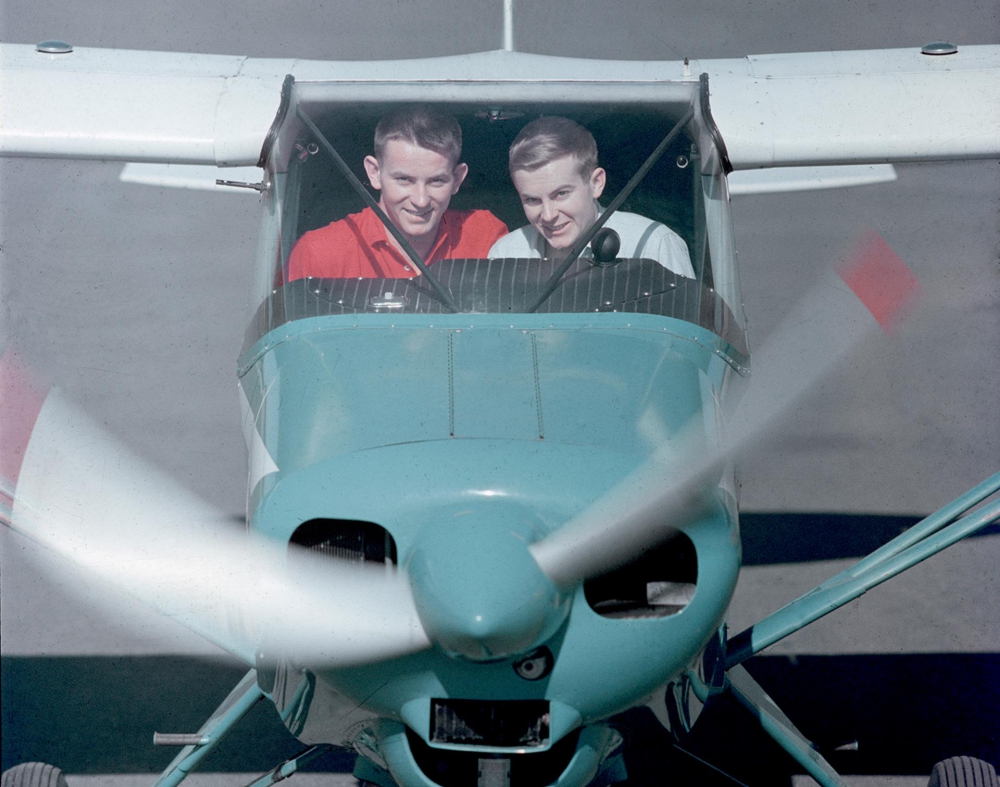is a brand new member of The Forbes 400. Blue, 84 (estimated net worth $4.1 billion), who as chairman and 80% owner of San Diego-based defense contractor General Atomics (his brother Linden, 83, owns the other 20%, worth another billion) first introduced the Predator drone into the skies 25 years ago to surveil Serbian forces during the Clinton administration.
A Predator was one of the first U.S. aircraft in Afghanistan after 9/11. Since then, the Predator has evolved through deployments in Iraq, Pakistan, Somalia and Yemen. Now loaded with cameras, communications gear and air-to-ground Hellfire missiles, it surveils, tracks and kills. President Obama authorized more than 500 drone strikes, according to the Bureau of Investigative Journalism; so far President Trump has signed off on at least 259, according to research by the Washington, D.C.-based think tank New America.
General Atomics, which did not respond to multiple requests for comment, has sold hundreds of Predators to the U.S. military and other governments around the world and generates $2.1 billion a year from its unmanned aircraft business (total revenues for the private company are estimated at $2.7 billion).
Richard Whittle, author of Predator: The Secret Origins of the Drone Revolution, wrote that the system
“is arguably the most important new military technology since the nuclear-armed intercontinental ballistic missile.”
Flashback to a perfect late summer afternoon, 64 years ago. Twenty-one-year-old Neal Blue and his 20-year old brother Linden were at 16,000 feet, lost in the vastness between Buenos Aires and Rio de Janeiro when their radio gave out. They were almost out of fuel, 6,000 miles away from their home in Denver, and had no way of calling for help. The brothers decided they had no choice but to ditch their Blue Bird, a borrowed four-passenger Tri-Pacer, somewhere on the remote flatlands of southern Brazil.
In 1956, the heyday of the hero aviator was well within living memory. It had only been 20 years since Amelia Earhart disappeared into the Pacific; 30 since Charles “Lucky Lindy” Lindbergh had conquered the Atlantic. The “Flying Blue Brothers” were famous. The wealthy, good-looking Yale undergrads were on a South American aerial marathon covering 25,000 miles in 110 days while crossing the Andes a dozen times. The Blues had sold the rights to their tale of derring-do to Life magazine for $3,000 and all the film they could carry.

Neal (left) and Linden, who are looking at a map of South America in this photo, raised $3,000 to for their aerial adventure across South America. JAMES BURKE / GETTY IMAGES
With a few exceptions—turbulence over El Salvador, thunderstorms in Colombia and severe icing in Chile—their trip had been smooth sailing until that fateful September day. The crash-landing was terrifying. The Blue Bird’s wheels bounced off a dirt road before it smashed into a fence, wrecking the flimsy plane. Unbelievably, the Blue Brothers walked away unscathed. “Once you have that kind of experience, it does give you confidence that maybe you can do almost anything you want,” Linden told a reporter years later.
The Blue brothers grew up in one of the wealthiest families in Denver right after the Great Depression. The Blues’ business was real estate, and both their mother, Virginia, and father, James, worked in the family firm. During World War II, James Blue was drafted into the military while Virginia Blue joined the Red Cross. In 1967 Virginia ran as a Republican for state treasurer and became the first woman elected to a statewide position in Colorado. (She died in 1970 in the midst of her reelection campaign; the state dedicated a stained-glass window at the Capitol building to her memory.)
Long before they became press shy (both Blue brothers refused repeated requests for comment on this story and neither have given a substantive interview in over a decade), the Blue brothers were publicity hounds. In 1955, Neal Blue and three of his Yale classmates traveled from Paris to India to the U.S. and convinced the New York Times to let them write about their round-the-world journey in a multipart series for the newspaper. The Life cover came a year later, after the brothers pitched their South American excursion to magazine editors nationwide. In March 1961, just weeks before the failed Bay of Pigs invasion, Linden Blue took off again for Nicaragua but, despite “full and complete clearance from the Cuban government to pass over Cuba,” was forced to land by a Cuban fighter plane. He spent 12 days in jail before he was expelled to the United States.
After graduating from Yale, the brothers both enlisted in the U.S. Air Force: Neal Blue worked with nuclear weapons; Linden served in the Air Force’s police force. After leaving the military, the duo expanded the family fortune in real estate, agriculture, and oil and gas production through their Cordillera Corporation.
They also pursued other interests. In the early 1970s, Neal Blue served as a director on the board of Colorado-based Great Western United Corp., where he and his brother were the biggest shareholders. News reports from the time show that Neal Blue resigned in 1974 when its sugar business was indicted on charges of price fixing by the U.S. government. The case was settled but not before billionaire W. Herbert Hunt and his brother Nelson—later infamous for trying to corner the silver market—stepped in to buy most of the company. In the early 1980s, Linden Blue held executive and director roles at a variety of aircraft and defense companies including LearJet, Raytheon and Beech Aircraft.
In 1986, the brothers landed on a unique opportunity. Chevron had recently acquired Gulf Oil and now wanted to divest excess subsidiaries, one of which was General Atomics. Founded in 1955 by atomic physicists who had worked on the Manhattan Project, GA was for the most part a government-funded research company that performed some of the world’s most advanced nuclear experiments.
The initial allure of General Atomics for the Blues was getting a good deal on its real estate, 424 acres of prime land just outside of rapidly developing San Diego. While negotiating with Chevron in 1986, Neal Blue promised 20% of the company to a group of executives, according to former senior vice president David Overskei, but they reneged. In all, the Blues paid a reported $60 million for the company through a leveraged buyout.
But aviation was in Neal Blue’s blood and soon, he started thinking of ways he could reimagine the company. “Neal talked to me about drones and other kinds of technologies at least two or three times a week,” says Tom Dillon, who was the senior vice president of defense programs from 1984 to 1988. And that was how “Project Birdie” was born: GA started building a unique and cost-efficient drone that didn’t require a human on board because of a built-in GPS system. It was called Birdie, executives joked, because it went “cheap-cheap-cheap.”
At first it was hard to find customers for GA’s untested drone. When a government agency—the CIA—finally wanted to buy a drone from General Atomics during the Balkan Wars in 1993, Linden Blue couldn’t believe his ears, according to Frank Strickland, a managing director at Deloitte who served in the CIA. GA’s cheap surveillance drone impressed and in 1994, the U.S. Navy awarded the company a $31.7 million contract to build a more advanced drone, which eventually became the Predator.
It’s been an amazing couple of decades for GA and the Blue brothers, but there are some indications that the company’s salad days might be behind it. In the 25 years since the Predator’s 1994 maiden flight, competitors have been catching up. There are more players in the market than ever, and their combined sales are expected to increase from $4.9 billion in 2018 to $10.7 billion in 2028. Northrop Grumman, which has the largest share of the drone market (GA is second), makes the $120 million RQ-4 Global Hawk—a more robust drone that can reach 60,000 feet, one of which Iran shot down last June. The $30.1 billion (2018 sales) company also makes the RQ-180 stealth drone that can evade radar. In August 2018, Boeing announced a $805 million award from the U.S. Navy to introduce flying drone tankers.
“[Predator] is not stealth. It’s not fast, and it’s not cheap,” says Josh Sullivan, an aerospace and defense analyst at The Benchmark Co. “It’s not to say it won’t be used. It will be used. It just won’t be the dominant solution that it was in the decade of Iraq and Afghanistan.”
General Atomics still has one advantage over its competitors, however.
“Because they’re private, because they have stable ownership, they can invest in the future,” says Phil Finnegan, director at aerospace analysis firm Teal Group. “They can focus on the long term in a way that other defense companies can’t.”
In 2014, Neal’s son Linden P. Blue took charge of the company’s drone business, and he’s likely to become GA’s next CEO.
“Linden is definitely trying to make changes,” says a current GA employee who manages projects within the Aeronautical Systems division. “He is trying to bring the company up to big-company standards.” According to the manager, there are new processes, databases and systems in place to streamline GA’s production. Good moves, but they also mean the firm is not as agile and fearless as it used to be. “I think General Atomics has missed the golden moment when it could have sold itself at top dollar to one of the big defense conglomerates,” says Loren Thompson, chief operating officer at the Lexington Institute. “The future looks cloudy to me.”
Source: Forbes


